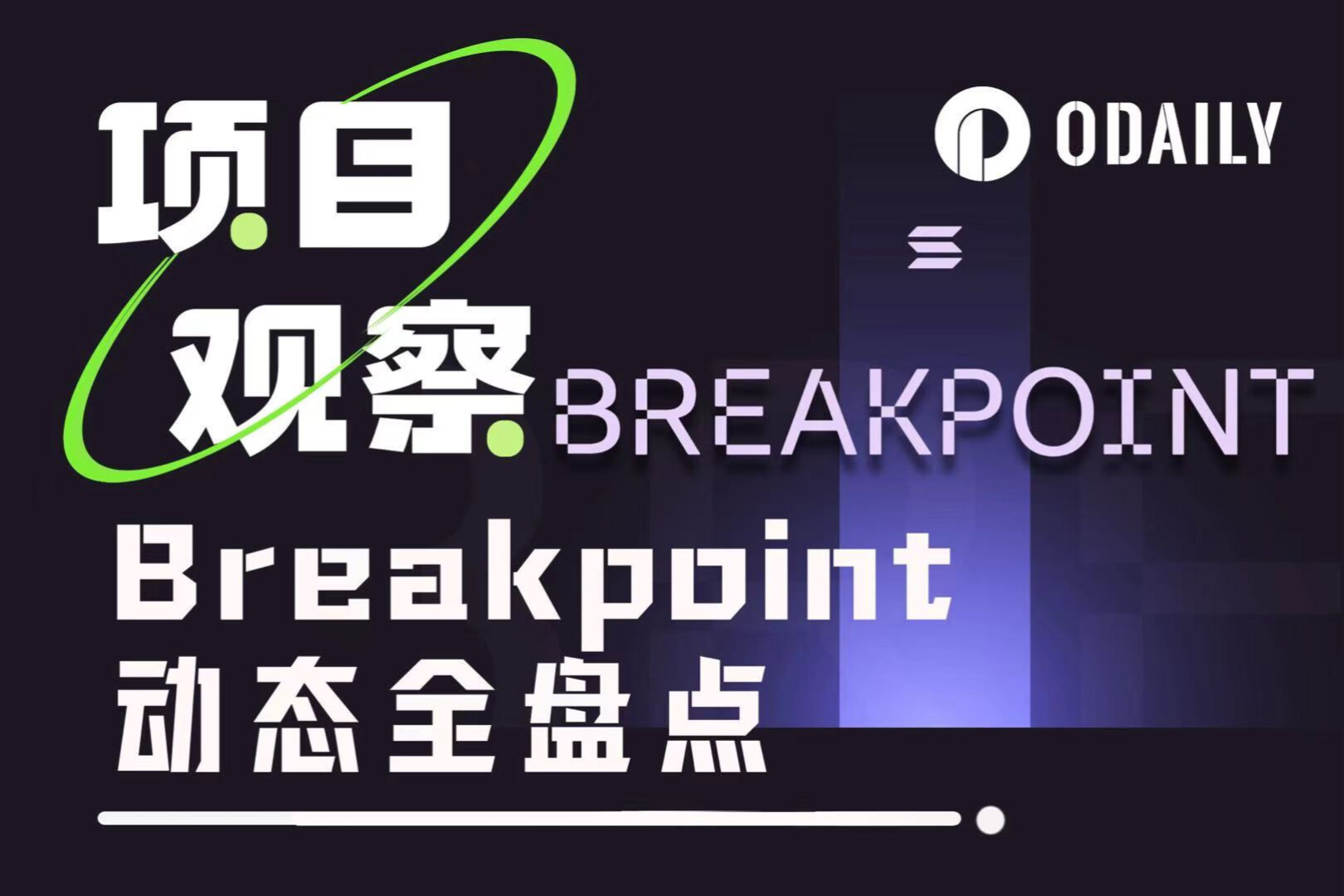解读零清算风险的Solana算法稳定币「Nirvana」
作者 | 秦晓峰
编辑 | 郝方舟
出品 | Odaily星球日报
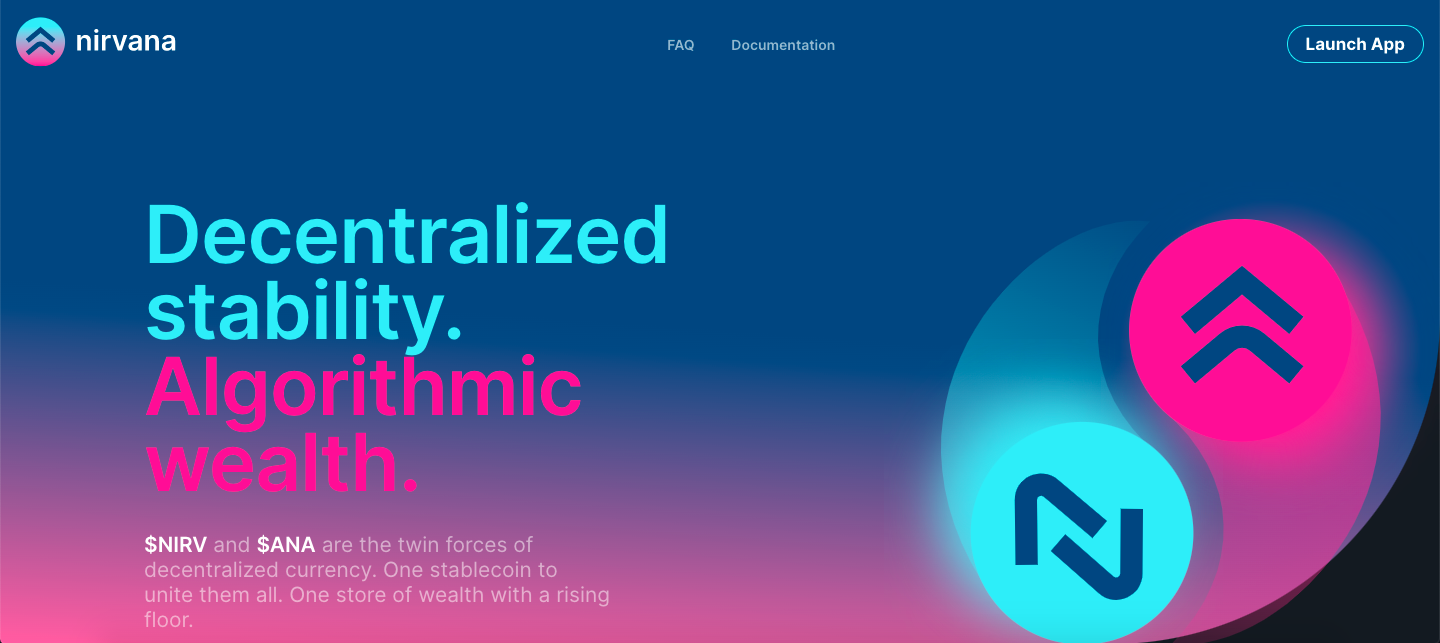
过去几天,一个名为「Nirvana」项目备受关注,引起加密社区广泛讨论。
「Nirvana」是一个基于 Solana 区块链网络的算法稳定币协议,旨在防止恶性通货膨胀。
该项目采取双代币系统:ANA,一种算法亚稳态代币,用作财富存储;由 ANA 作为抵押生成的 NIRV 代币,是一种去中心化的超级稳定币,用作价值存储。
官网数据显示,过去一周,ANA 价格从 3.6 美元一度飙升至 20 美元,最高涨幅达到 455%,目前价格维持在 19.1 美元;ANA 回收底价也从 1 美元增长至 4.65 美元,涨幅 365%。目前,ANA 流通量为 196.6 万个,流通市值 3755 万美元,ANA 质押年化收益率接近 300%。
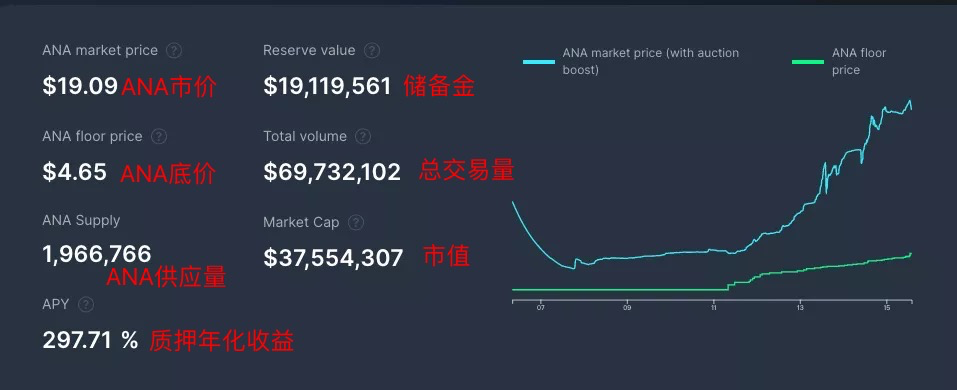
在近期围绕算法稳定币的火热讨论声中,“Nirvana 的机制有 Bug 吗”“Nirvana 是否会成为这一赛道的破局者”频繁出现,也将是本文聚焦的重点。
DeFi套娃,循环质押、贷款
下面,我们结合案例,帮助大家理解「Nirvana」项目规则设计以及相关玩法。
首先,用户首先登陆官网(https://app.nirvana.finance/),连接 Solana 钱包地址,使用系统支持的五种稳定币(USDC/USDT/USDH/UST/NIRV)购买 ANA 代币。
ANA 代币是 Nirvana 协议专为可持续收益和高 APY 而设计的投资工具,具有较高的波动性(风险性)——ANA 上线首发价格接近 10 美元,而后迅速暴跌至 3.1 美元,近期大幅上涨至目前的 19.1 美元。
正如前文所提到的,ANA 有一个回收底价(Floor Price),目前是 4.65 美元。它意味着,当 ANA 价格暴跌至 4.65 美元以下时,用户可以将自己持有的 ANA 代币以 4.65 美元的价格卖回给协议,从而减少损失(相当于协议给 ANA 确定了市场最低价);而支持协议回收的,正是协议所储备的资金(Reserve Value),目前是 1911 万美元(上图已标注),后文会详细介绍地板价以及储备金。
在获得 ANA 代币后,用户可以点击「Stake & earn」功能,将 ANA 进行质押获得收益,目前年化收益率接近 300%;质押奖励以特殊代币的形式出现:pre-ANA 或 prANA (取自梵文中的“生命”一词)。
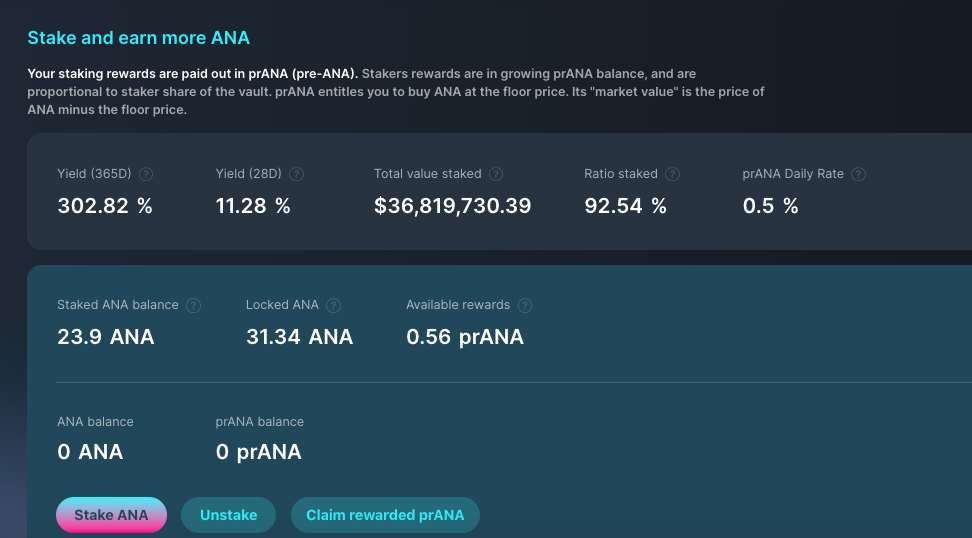
(质押 ANA)
prANA 是一种特殊的金融工具,是具有动态执行价格的期权,即 prANA 代币赋予其所有者以当前底价购买 ANA 的权利。简单来说,目前 ANA 市价是 19.1 美元,底价(Floor Price)是 4.65 美元,持有 prANA 的人可以支付一个 1 prANA 加上 4.65 美元从而获得 1 个 ANA((注:协议随后会销毁 prANA 代币),净赚 19.1-4.65= 14.45 美元,这正是挖矿收益的来源。
prANA 奖励每个 epoch 分配一次,prANA 奖励数量 = ANA供应量 * 奖励系数,随着 ANA 供应量的增加,奖励也会增加;个人账户收到的 prANA 数量,取决于该账户持有的质押 ANA 在总质押中的占比。
其次,在用户进行 ANA 质押后,还可以利用质押资产进行贷款,此时只需要点击「Get/Repay NIRV」功能。假设用户质押了 100 个 ANA ,市场价为 19.1 美元,底价为 4.65 美元,此时他可以贷款总量为:100*4.65=465 美元,系统会提供给用户最多 465 个 NIRV 代币。
NIRV 代币是 Nirvana 协议稳定币,也被称为超级稳定币,其背后价值是以 ANA 底价作为支撑;只要协议能够保证 ANA 最终能以底价回收,NIRV 借贷永远不会触发清算,NIRV 价格也不会产生波动。因此,官方称 Nirvana 协议是零清算风险借贷。
最后,用户获得 NIRV 代币后,可以返回第一步,用 NIRV 代币再次购买 ANA 代币,二次质押,二次借贷……无限套娃,形成复利。只要协议一直存在,这种套娃基本是零风险的。
储备金保证底价回购
这部分将介绍 Nirvana 协议上最后一个功能「Nirvana buyback」(回收)。当 ANA 代币价格大幅下跌,跌破底价时,用户可以点击该功能,以当前底价将所有 ANA 卖回给协议,不会产生任何滑点。
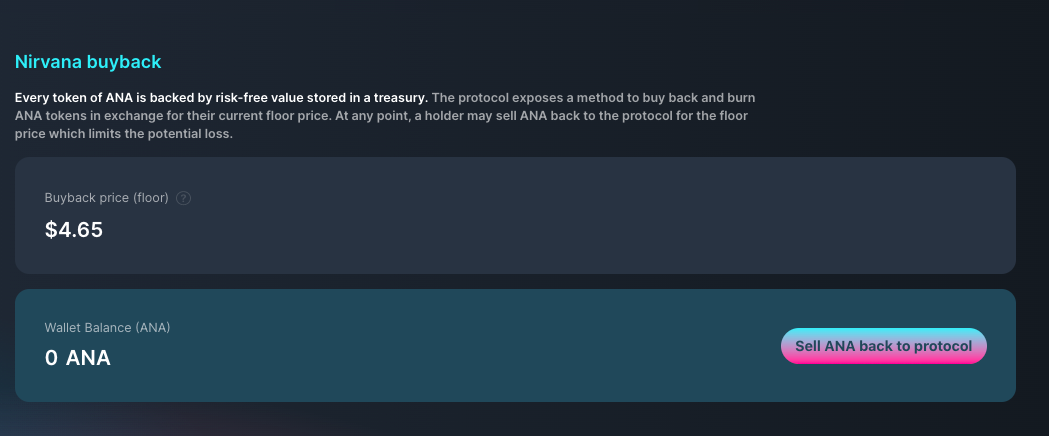
当然,发生这种情况的可能性微乎其微,因为 Nirvana 协议发明了一种虚拟 AMM 机制,将 ANA 的底价编码到其定价功能中。该 AMM 保证 ANA 不会以低于底价的价格被购买,并且可以保证有足够的流动性以底价回收 ANA。
Nirvana 协议自有市场(protocol-owned market,简称 POM)连接到 ANA 的中央铸币厂。POM 没有将未使用的 ANA 代币锁定在传统 AMM 池中,而是持有虚拟 ANA。当用户购买新的 ANA 时,POM 会及时铸造一个 ANA 代币;当 ANA 的持有者将其卖回给 POM 时,ANA 被烧毁并从供应中移除。并且,POM 中没有等待购买的 ANA 池,因为这种未使用的 ANA 池需要在底价上为每个未使用的代币储备相关的流动性。
这种 POM 模型具有最大的资本效率。与传统的 AMM 不同,必须以所有可能的价格为两种代币锁定资金,Nirvana 的 POM 不需要 ANA,也不需要高于 ANA 当前市场价格的流动性。POM 仅以低于 ANA 当前现货价格的价格集中流动性,为卖回 ANA 的人提供出口。POM 可视化流动性可视化图形如下所示:
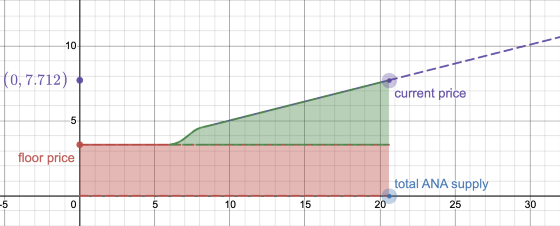
简单来说,当有人购买 ANA 时,他们支付的现金会进入储备金,并为那些将 ANA 卖回的人提供流动性;当有人将他们的 ANA 卖给 POM 时,他们会收到一些市场流动性,他们的 ANA 会被烧毁。
需要注意是的,储备金的存在,是为了保证 ANA 能够以底价被回收,这也是该协议最大的核心竞争力。
为了提供这种保证,储备金的风险必须极低,达到理论上尽可能接近“零风险”的程度。因此,在最初购买 ANA 时 Nirvana 协议仅支持稳定币购买,从而降低系统风险;并且,接受一篮子多种类型稳定币,使得 ANA 的内在价值并不依赖于单一的稳定币。
关于 ANA 底价问题,有一点需要重点强调:协议规定,底价会随着时间的增加不断上涨,永远不会下降。底价抬升需要满足以下条件:在抬升底价前,要保证在当前市场价格附近的最低流动性——该流动性要达到总储备资产的 30%;当达到支撑价格的流动性阈值时,部分储备金将重新分配以提高底价,从而将支撑价格的流动性降低至总储备金价值的 25%,以此类推,不断提升底价。
听起来有点复杂,总结来说就是:总储备金既要满足底价回收条件,也要满足当前市场价格的最低流动性,剩余储备金会拿出来提升底价。
总得来说,Nirvana 协议在目前 DeFi 市场算是一个不错的创新:高收益为链上资金提供了一个不错的去处,同时通过虚拟 AMM 机制设计保证了 ANA 的流动性,以一篮子稳定币作支持 NIRV 代币的稳定性。更关键的是,作为一个完全去中心化的项目,团队承诺 ANA 代币完全由市场自主产生,团队没有获得任何分配。


